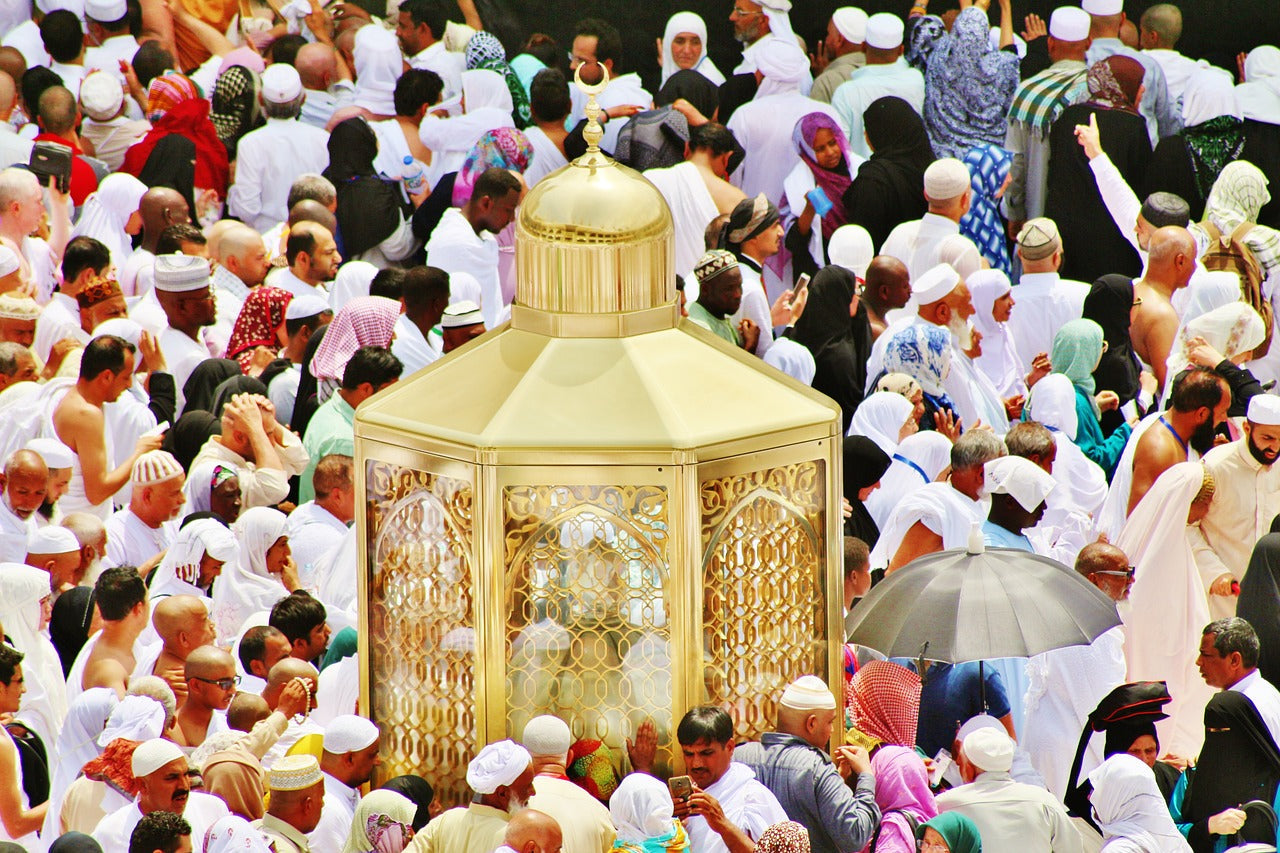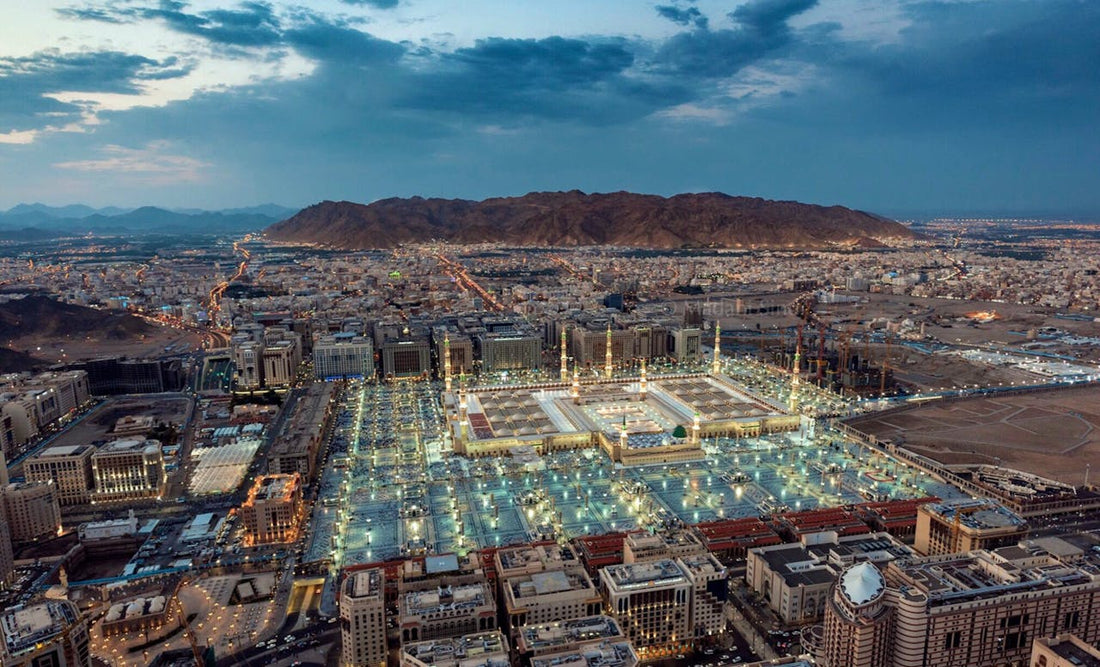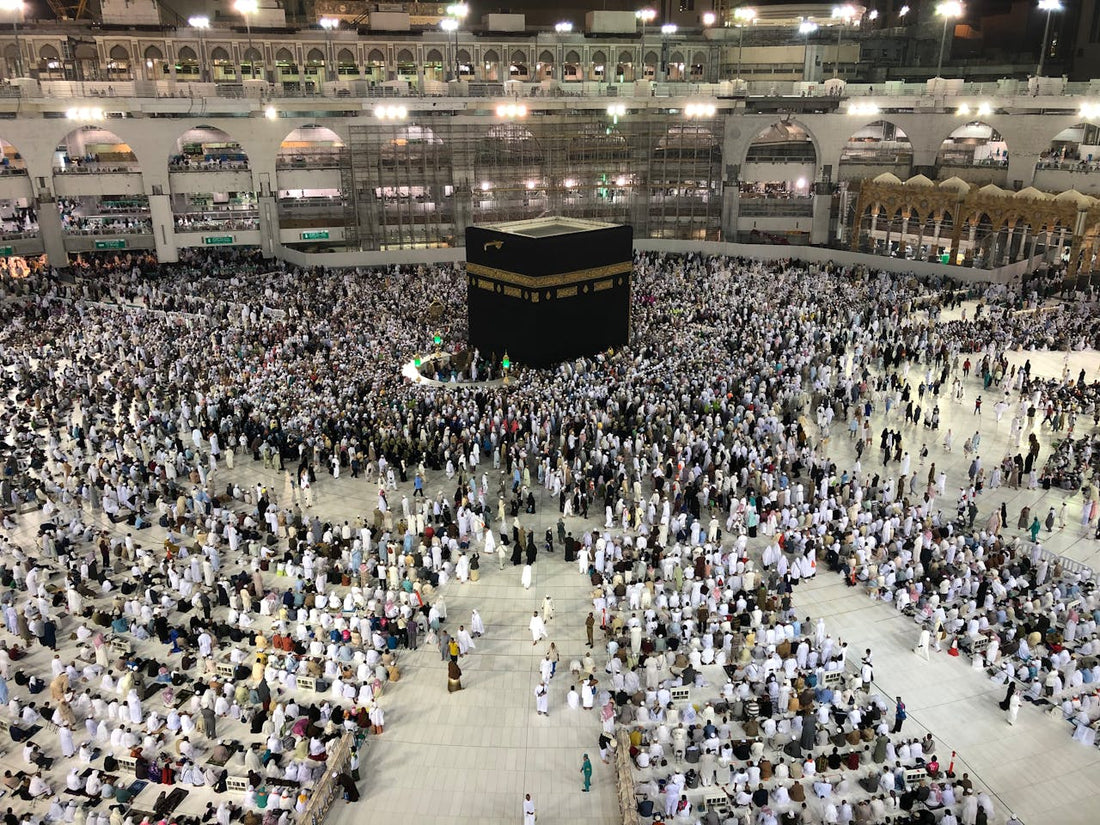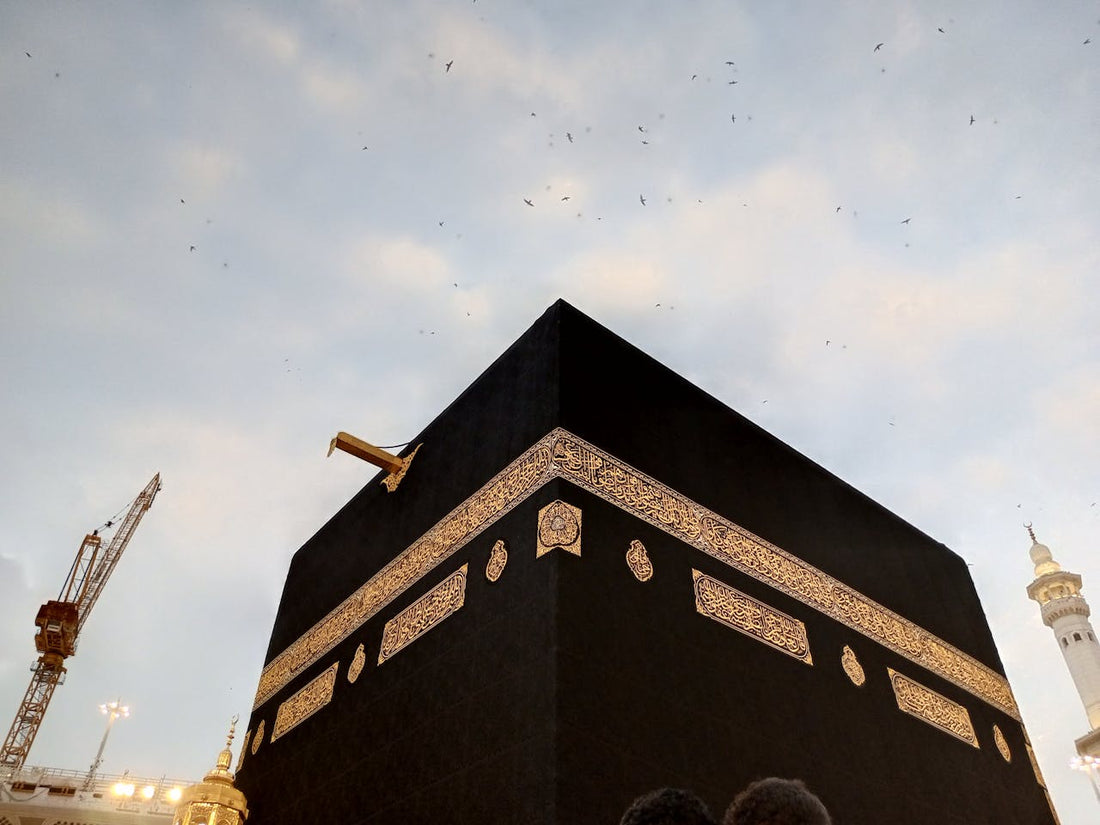Millions of Muslims travel to Makkah every year not just to perform Hajj or Umrah but also to explore its Ziyarat places that have profound spiritual and historical roots.
Visiting these sites helps Muslims to feel their connection to Islamic history and the life of Prophet Muhammad ﷺ.
So, no matter if you are planning to perform Umrah for the first or fifth time, all that matters is to understand the significance of these locations and how to reach them, especially with the right Makkah Ziyarat guide.
In this guide, we’ll walk you through everything, from top Ziyarat places in Makkah to how to plan your trip.
You will also get to know the taxi costs and helpful FAQs to help you travel the city with ease.
Hence, stick with us to the end of it!
What is Ziyarat in Makkah?
Starting with the key term, (since this guide revolves around that) Ziyarat means "visitation," and in Islamic tradition, the meaning extends to include visiting places that are of historical and religious significance.
If we narrow it down to Makkah, Ziyarat involves visiting sacred sites that hold great meaning from the time of Prophet Muhammad ﷺ and prophets before him.
Ziyarat is an experience that combines worship, education, and reflection; therefore, visiting Ziyarat places brings spiritual rewards and gives the visitor a deeper appreciation of Islamic heritage.
Although some of the Ziyarat places are part of the formal rites of Hajj or Umrah, some are not.
So, many pilgrims choose to perform Ziyarat after completing their Umrah or Hajj rituals.
For that, they use either a local Ziyarat guide or a booked Ziyarat tour operator.
How Many Ziyarat Places Are There in Makkah?
There is no exact number of Ziyarat places that can be quoted since the number varies based on individual interpretations, but there are at least 10 key locations that people commonly include in their itinerary or Ziyarat tour.
These Ziyarat places in Makkah include mosques, mountains, and areas tied to key events in Islamic history.
Some of these locations are visited more commonly due to their accessibility and significance.
If you're short on time, keep notes of these 10 must-visit Ziyarats we have curated just for you.
These places provide an excellent overview of Makkah’s landscape, both spiritually and historically.
Top Historical Ziyarat Places to Visit in Makkah
Below are the most significant Ziyarat sites in Makkah.
All these key locations can be explored either by using a Makkah Ziyarat map or by booking a Ziyarat taxi from local providers.
The Holy Kaaba

The first and the most important one is for sure the Kaaba, which is also known as the Holy Kaaba or the Ka’abah.
It is the heart of the Islamic world and is located inside Masjid al-Haram. The Holy Kaaba is the first house of worship built for mankind.
Its significance lies in the fact that all Muslims face towards the Kaaba while offering their prayers, so it's the focal point of both Hajj and Umrah.
In spite of being a part of the core pilgrimage rituals, many people desire a deeper, spiritual visit to the Kaaba in the form of Ziyarat.
As this place is sacred and highly regarded, pilgrims make the most of their visit. They cherish the humble experience of standing before it and offering personal duas.
Maqam Ibrahim

The second one, which is a few metres away from the Kaaba, is Maqam Ibrahim.
It is the stone that holds the footprints of Prophet Ibrahim (AS). He stood on this rock while building the Kaaba with his son Ismail (AS).
Pilgrims are encouraged to pray two rakaats behind Maqam Ibrahim after completing the Tawaf.
Well of Zamzam

Situated within Masjid al-Haram is the Zamzam Well. It has quenched the thirst of pilgrims for centuries.
The story behind this traced back to the time when Hajar, wife of Prophet Ibrahim, ran between Safa and Marwah in search of water for her baby, Ismail, and a stream gushed forth under the feet of baby Ismail.
Therefore, the Zamzam water is considered blessed, and pilgrims often drink from it and take it home.
Not only this, it is customary to distribute zamzam among friends and relatives as a sacred gift.
Jabal al-Noor & Cave of Hira

Jabal al-Noor which means "Mountain of Light" houses the Cave of Hira, where Prophet Muhammad ﷺ received the first five verses of the holy Qur’an through the archangel Jibreel.
The climb to the top of this is steep, but the view and spiritual significance are unmatched.
So, visiting the Cave of Hira means availing a chance to reflect on the origins of Islamic revelation.
Cave of Thawr or Ghar Thawr

Apart from the Cave of Hira, another cave that has historic roots in Islam is Cave of Thawr.
This cave is located on Jabal Thawr (Mount Thawr). During the migration (Hijrah) to Madinah, the Prophet Muhammad ﷺ and Abu Bakr (RA) hid for three days here, as Quraysh were in search to kill them.
As a divine protection, Allah سُبْحَانَهُ وَتَعَالَى miraculously protected them by sending a spider that spun a web at the cave’s entrance to deter the Quraysh.
Thus, the cave of Thawr is a symbol of faith, hope, and divine protection. It is a challenging climb but a deeply spiritual site that represents trust in Allah سُبْحَانَهُ وَتَعَالَى and companionship.
Jannat al-Mu’alla Cemetery

Jannat al-Mu’alla is a solemn and powerful place for reflection.
This ancient cemetery is the resting place of several of the Prophet’s family members, including his grandfather Abdul Muttalib, his wife Khadijah (RA), and other relatives.
Though entry may not always be allowed, it can be viewed respectfully from the outside.
Masjid Ayesha
Masjid al-Taneem, located about 7 km from the Kaaba is also known as Masjid Ayesha, because this is the place where Aisha (RA), the wife of Prophet Muhammad ﷺ, entered into the state of wearing Ihram for Umrah.
Thus, it’s a common Miqat point (place to make intention) not only for locals but those, too, who wish to perform another Umrah or offer a Ziyarat.
Masjid Jinn

As mentioned in Surah al-Jinn, this mosque is named after the event where a group of jinn embraced Islam after listening to the Prophet Muhammad ﷺ reciting the holy Qur'an.
Masjid Jinn is located near Masjid al-Haram, and it is considered one of the oldest mosques in Makkah.
Mina – The Tent City

This city, Mina, is known for its white air-conditioned tents that accommodate pilgrims during Hajj, and this is why it is also known as “The Tent City”.
It’s a holy site located between Makkah and Muzdalifah where the two key rituals, Ramy al-Jamarat (stoning the devil) and Yawm al-Nahr (Day of Sacrifice), are performed here during Hajj.
Outside of Hajj, it's a quieter spot with great historical value and a common stop in Makkah’s Ziyarat routes.
Arafat – The Day of Mercy

The plain of Arafat is one of the most important sites in Islamic history.
Twelve miles southeast from Makkah, it houses Mount Arafat, located on a granodiorite hill, a place where Prophet Muhammad ﷺ gave his final sermon during his last Hajj.
Therefore, it is visited on the 9th of Dhul Hijjah, the peak of Hajj.
Mount Arafat is also known as Jabal Rahama, meaning “Mount of Mercy”. It is approximately 70 metres high.
Visiting Arafat as part of Ziyarat allows pilgrims to stand where the Prophet stood, which often brings them tears.
Muzdalifah

Situated between Mina and Arafat, Muzdalifah is a place where pilgrims spend the night under the open sky after Arafat during Hajj.
They collect stones here for the ritual, Ramy al-Jamarat, performed at Mina.
This place is often overlooked, however it’s a quiet and reflective place that holds a key role in Islamic rituals.
What is the Most Visited Place in Makkah?
Well, if you’re reckoning what’s the most visited and revered place in Makkah, then it’s undoubtedly the Kaaba, which is situated within Masjid al-Haram.
Millions of pilgrims visit this sacred site each year to perform Tawaf and pray.
So, it wouldn’t be wrong to say that it's the spiritual axis of the Muslim world.
How Much Does Makkah Ziyarat Cost?
Makkah Ziyarat cost varies depending on how you plan the journey.
The three ways how majority of people plan their journey are as follows:
- They either privately hire a Ziyarat guide or share it with other pilgrims.
- They join a group tour. These group tours usually have a guide.
- They utilise hotel-arranged packages.
If you’re going with the first way, then expect to pay between 250 to 600 SAR for a full Ziyarat tour in Makkah.
This typically includes 7–10 stops and takes about 3–5 hours.
However, this does depend on each tour, as some might be longer than others.
How Long Does Makkah Ziyarat Take?
A standard Ziyarat tour typically takes 3 to 4 hours, but if you want to spend quality time at each site, keep 6 hours in mind.
However, this does also depend on the type of tour that you're on.
Moreover, for an in-depth experience that includes prayer, reflection, and historical insights, forget about the time constraint.
Note: Taking your time is only possible if you visit the sites through a private taxi, not a shared one.
How to Plan Your Ziyarat Trip in Makkah?
A meaningful and smooth Ziyarat experience is all about how well you organise your Ziyarat trip.
Ziyarat Tour Options
There are two main ways to explore and experience Ziyarat places in Makkah.
The first one is by pre-booking a group tour.
These tours are often arranged by hotels or local tour operators.
These group tours include a guide, too, who provides historical context while you visit the Ziyarat places.
The second one is by arranging a private Ziyarat taxi.
A private Ziyarat taxi offers you flexibility in timing and site visits.
You can spend as much time as you want at each location.
All you need is to use a reliable Ziyarat guide or verified online platform when booking.
How Much is a Makkah Ziyarat Taxi?
Makkah Ziyarat taxi cost depends on various things: vehicle type, the number of sites, and duration. On average:
- A shared taxi typically costs as low as 60 SAR per person
- A standard taxi costs around 250 SAR
- An SUV or van ranges between 300–350 SAR
- Car “4 seater” 450 SAR
- Mini bus “10 seater” 650 SAR
- A coach “49 seater” 900 SAR
Frequently Asked Questions
Where Can I Go for a Ziyarat in Makkah?
You can visit major places like the Kaaba, Jabal al-Noor (with the Cave of Hira), Arafat, Mina, Muzdalifah, and Maqam Ibrahim.
Other important ziyarat places that you can visit include historical mosques like Masjid al-Taneem and Masjid Jinn.
How Much Does a Taxi Cost for Makkah Ziyarat?
A taxi costs between 250 and 600 SAR, depending on vehicle type and whether you choose a private or shared ride.
Is Ziyarat Part of Umrah?
No, Ziyarat is not an official part of Umrah. However, it is highly recommended and commonly performed by Umrah pilgrims as a way to honour Islamic history and connect spiritually.
Conclusion – Ziyarat Places in Makkah
Exploring the Ziyarat places in Makkah isn’t just about ticking locations on a map.
It’s about stepping into the footsteps of the Prophet Muhammad ﷺ; it’s about revisiting stories that shaped our faith and ultimately feeling the timeless energy of a sacred city.
Thus, plan wisely with a trusted Ziyarat taxi, and remember that these sites are not just landmarks to be seen; they’re living history.
So, whether you're visiting these sacred places during Umrah, Hajj, or a private pilgrimage, make the most of your journey.




